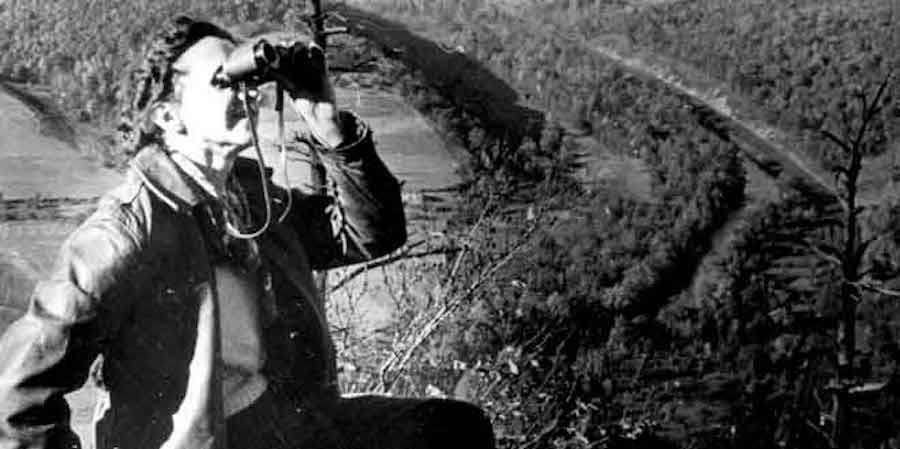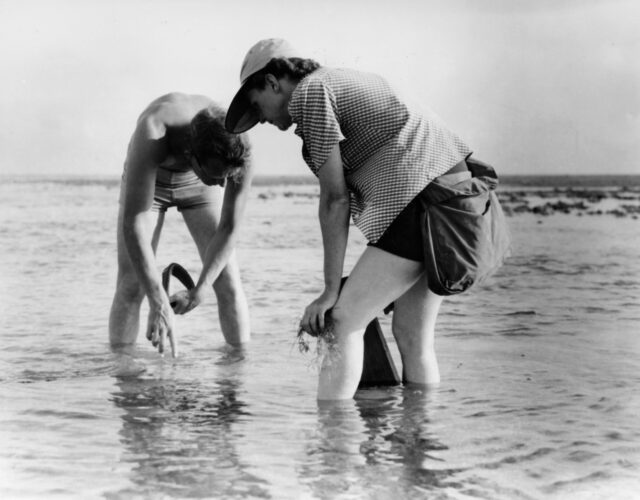Images of death permeate the opening chapter of Rachel Carson’s Silent Spring: birds no longer sing, fish float on the surface of ponds, and flowers droop by the roadside. This grim portrait, first published 50 years ago, gripped readers, urging them to take a closer look at the ever-growing use of synthetic organic herbicides and pesticides that began toward the end of World War II.
When these chemicals first came on the market, they appeared almost miraculous. In 1939 Swiss chemist Paul Müller had shown that the compound DDT (dichlorodiphenyltrichloroethane) eradicated insect populations. DDT sprayed from airplanes eliminated the malaria- and dengue fever–carrying mosquitoes that sickened and even killed American soldiers in the Pacific theater. Wartime successes led to postwar applications, with chemical companies selling DDT to farmers to reduce crop loss to insects. Tropical nations used the compound to continue the fight against the mosquitoes that spread malaria. In the 1950s the chemical industry created new pesticides and herbicides, such as chlordane and heptachlor for killing insects and 2,4-D to control sagebrush growth on western U.S. roadsides.
But all this good news had a dark side, which Carson detailed in her 1962 book. At the time Carson was already well known for her best seller The Sea Around Us. She had worked for the U.S. Fish and Wildlife Service, first as a biologist and then as editor in chief of the organization’s publications, before turning to writing full time. Carson’s genius lay in pulling together already existing data from many areas and synthesizing it to create the first coherent account of the effects persistent chemicals had on the landscape and its inhabitants. She then turned these facts into a gripping narrative.
The book did not condemn all chemicals; Carson instead described herself as opposing the “reckless and irresponsible poisoning of the world that man shares with all other creatures.” She showed how alfalfa-sprayed DDT moved through alfalfa-fed hens, into the eggs, and finally into the egg-eating humans. She told readers how certain chemicals like dieldrin, used to kill agricultural pests, were stored in the body. The plants, animals, and people in her book formed an interconnected web—all affected by the introduction of these compounds.

Chemical manufacturers fought back. Velsicol Chemical Corporation, which produced chlordane and heptachlor, threatened Carson’s publisher with a lawsuit over her claims about its pesticides. Others pointed out Carson had failed to mention chemical successes: increased farm production and control over such insect-spread diseases as malaria. The Monsanto Company published an essay, “The Desolate Year,” the month after Silent Spring’s appearance to counter Carson’s apocalyptic vision. The essay showed that without pesticides and herbicides farmers would be unable to produce enough food for a growing population and that preventable diseases would continue to kill people. Many years later Robert A. Roland, president of the Chemical Manufacturers Association from 1978 to 1993, said that the chemical industry had made a mistake in not properly engaging with Carson and the environmental issues she highlighted.
The U.S. government responded to the book with an investigation into the ecological and health effects of these synthetic chemicals. President John F. Kennedy ordered his Science Advisory Committee to review pesticide and herbicide experiments. The committee published its findings a year later and suggested a link between DDT and liver damage, but its scope was limited. Regardless, Carson’s book changed how people saw the world around them and kick-started the modern environmental movement. Before Silent Spring’s publication regulation governing pesticides focused on their effectiveness; after publication, effects on the environment also had to be considered.
In the following decade the widespread use of DDT became the main focus of the environmental movement. In 1972 the U.S.Senate banned the compound, persuaded by new environmental organizations like the Environmental Defense Fund, which linked DDT to the thinning of eggshells and the subsequent near disappearance of the osprey from Long Island, New York. The government banned chlordane completely in 1988, and now strictly limits the use of heptachlor to the control of fire ants.
Carson’s book did not argue for prohibition of all synthetic chemicals. Instead, it showed that new methods, like the release of sterilized insects combined with a judicious use of pesticides, could control pests, limit their growing resistance to the chemicals used against them, and reduce the harmful effects on humans and the environment. Silent Spring was more than prophecy: it changed how governments, industry, and agriculture respond to ills that will always be with us.




